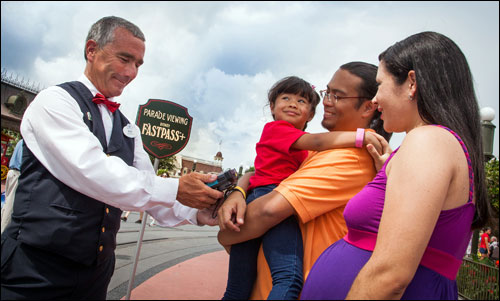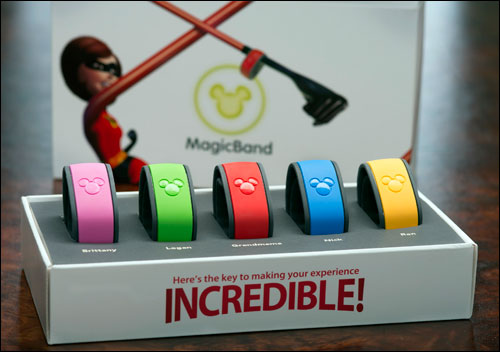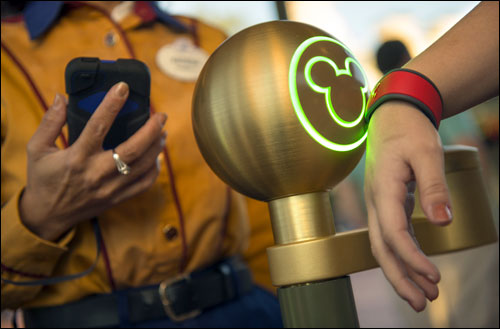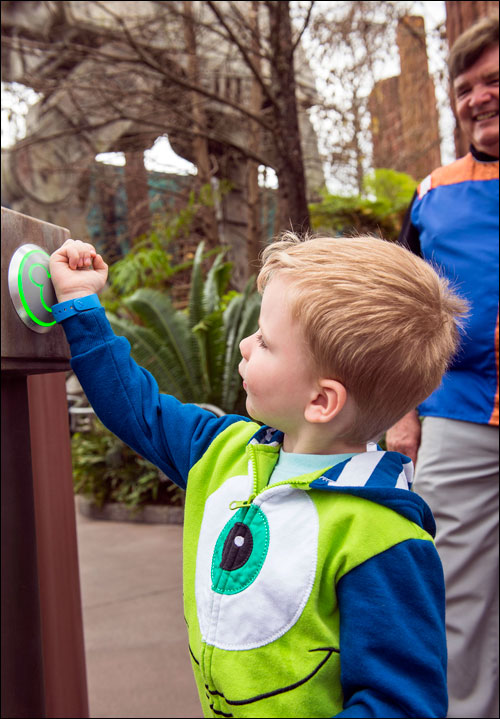Jun 16, 2014This spring in Orlando, Fla., Walt Disney World began providing a dual-frequency (13.56 MHz and 2.4 GHz) RFID wristband known as the MagicBand to all of its resort guests after they book a Walt Disney World hotel reservation. Guests not staying at a Disney hotel can purchase an RFID-enabled ticket at the gate, which provides access through entrances and other features also accessible via the MagicBand.

The MagicBand enables visitors to more easily access the services they reserve through the company's Web-based MyDisneyExperience system. Disney is also embedding 13.56 MHz high-frequency (HF) passive RFID inlays, compliant with the ISO 14443 standard, into all tickets that visitors purchase at the parks' ticket locations. All entrance points to the park, rides and other events, as well as Disney hotel rooms and point-of-sale locations, are equipped with HF RFID readers. The company is experimenting, in the meantime, with ways in which to use the active 2.4 GHZ RFID transceivers built into the wristbands. The active transceivers both send data and receive wake-up signals from readers, enabling them to go dormant and conserve battery life when not in the presence of a reader.
The MagicBand technology allows users to enter hotel rooms, make purchases and access attractions with the touch of a wristband's HF inlay against one of those touch point readers. The solution is aimed at bringing the physical world to the virtual experience, as part of MyDisneyExperience.
Currently, to book a visit to Disney World's theme parks, individuals can go to the MyDisneyExperience website, create an account and begin making plans up to 60 days prior to their arrival. That, says Dan Soto, Walt Disney World's director of experience development, could include using FastPass+, a system that allows them to reserve visits to specific attractions—up to three reservations during a single day—and then use the MagicBand wristband's HF inlay as validation to gain entrance at each location at the appointed time. Additionally, the MagicBand's 2.4 GHz transceiver provides data related to queue movements, allowing management to measure wait times.
First, when an individual makes reservations online, he or she is invited to customize a MagicBand for each member of that person's party. A differently colored wristband can be selected for each individual user, whose name can be engraved on the inside of the band to help guests differentiate their own wristbands from the others. The bands are shipped in a specially designed box to the buyer's home, and are already associated to each member of the party and ready to use.
Upon arrival at the hotel, the guest can utilize his or her wristband's HF inlay to gain entrance to the reserved hotel room. In addition, the visitor can touch the band against touch points at the park's entrance in order to gain admittance, access specific FastPass+ attractions, purchase goods at any of the stores, cafes or restaurants onsite, and have those payments charged to his or her hotel bill. Those who buy tickets at the park entrance and choose not to purchase MagicBands (which cost $12.95 apiece) can enter the park by tapping their tickets' RFID inlays against one of the gate readers.

To accommodate the new system, Disney removed all of its entry turnstiles and installed a total of 283 touch points with built-in RFID readers, as well as biometric finger scanners for redundancy purposes. The company also installed RFID touch points at the door to each of its 28,000 resort rooms.
The MagicBand's 2.4 GHz transceivers also transmit a unique ID number. Initially, Soto says, the active RFID technology's long-range functionality is being used for only one feature. Disney's Memory Maker program enables individuals to be automatically associated with pictures on a ride. As they pass a camera, a custom-built reader captures the ID number transmitted by the MagicBand's transceiver, and the Disney World software links his or her picture with that ID. Once the picture is taken and paired with that guest, it can be stored on the user's MyDisneyExperience account. The visitor can then log into the MyDisneyExperience site, and—if that person has purchased the Memory Maker product—view and purchase the photographs online.
In the future, Soto says, Disney expects to use the active RFID tag to provide guests with additional experiences, without requiring that they tap their wristband against a reader.
According to Soto, the wristbands have boosted the enthusiasm of visitors—who can receive them in the mail prior to the trip. What's more, he says, the bands speed individuals through queues and make it faster and easier to update FastPass+ reservations.
The system could also be used at other Disney properties, Soto adds. "This is clearly a platform that has applicability to other sites, but would need customization," he states, since each park has unique features with which the solution could be used.
The MyDisneyExperience system is intended to make a guest's Disney visit more personal and customizable, Soto says, and RFID enables that system to be used more easily. "MagicBand is a link between the virtual and the brick-and-mortar experience."




